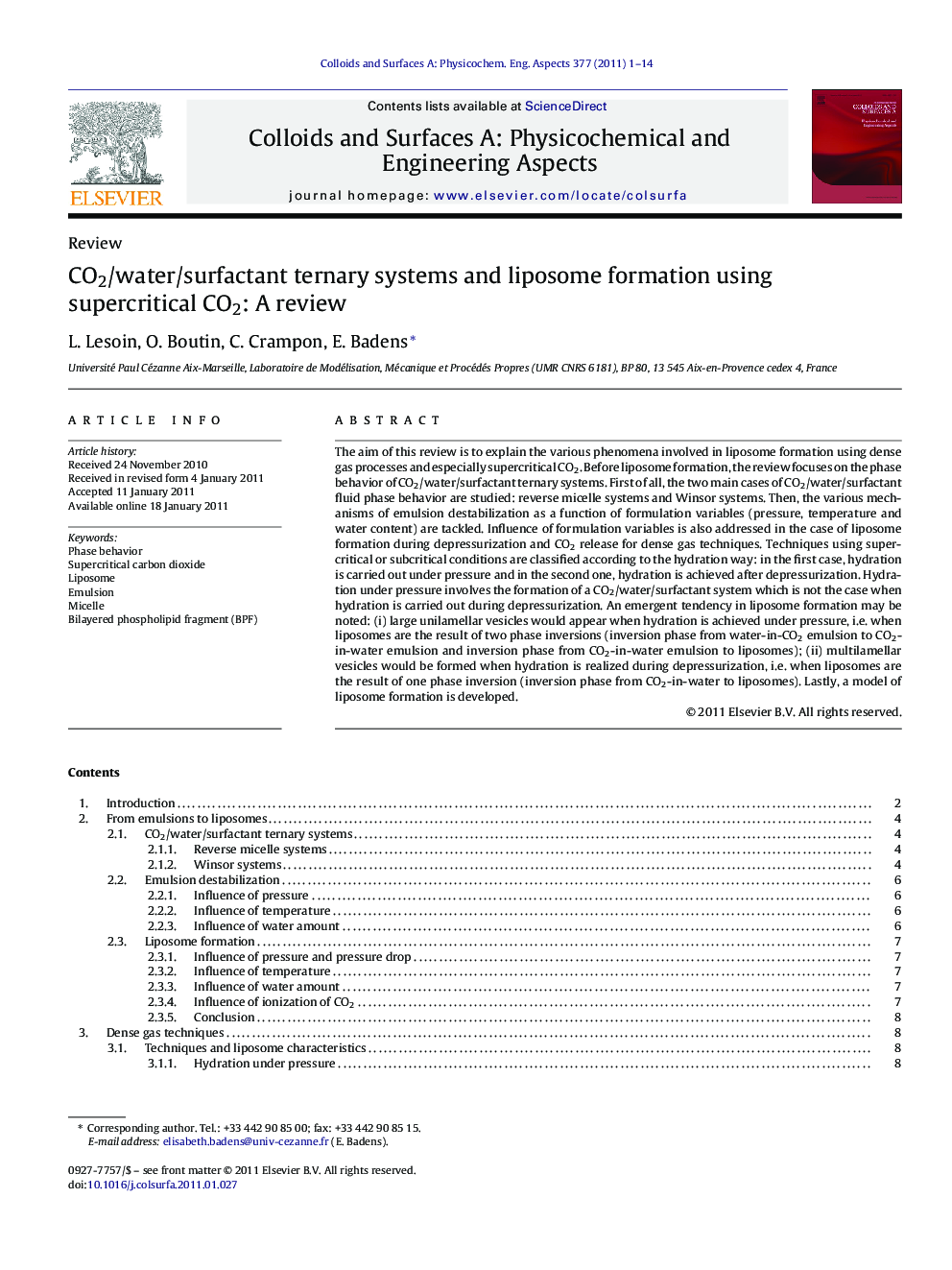| Article ID | Journal | Published Year | Pages | File Type |
|---|---|---|---|---|
| 594934 | Colloids and Surfaces A: Physicochemical and Engineering Aspects | 2011 | 14 Pages |
The aim of this review is to explain the various phenomena involved in liposome formation using dense gas processes and especially supercritical CO2. Before liposome formation, the review focuses on the phase behavior of CO2/water/surfactant ternary systems. First of all, the two main cases of CO2/water/surfactant fluid phase behavior are studied: reverse micelle systems and Winsor systems. Then, the various mechanisms of emulsion destabilization as a function of formulation variables (pressure, temperature and water content) are tackled. Influence of formulation variables is also addressed in the case of liposome formation during depressurization and CO2 release for dense gas techniques. Techniques using supercritical or subcritical conditions are classified according to the hydration way: in the first case, hydration is carried out under pressure and in the second one, hydration is achieved after depressurization. Hydration under pressure involves the formation of a CO2/water/surfactant system which is not the case when hydration is carried out during depressurization. An emergent tendency in liposome formation may be noted: (i) large unilamellar vesicles would appear when hydration is achieved under pressure, i.e. when liposomes are the result of two phase inversions (inversion phase from water-in-CO2 emulsion to CO2-in-water emulsion and inversion phase from CO2-in-water emulsion to liposomes); (ii) multilamellar vesicles would be formed when hydration is realized during depressurization, i.e. when liposomes are the result of one phase inversion (inversion phase from CO2-in-water to liposomes). Lastly, a model of liposome formation is developed.
Graphical abstractFigure optionsDownload full-size imageDownload as PowerPoint slideResearch highlights► Various phenomena involved in liposome formation using dense gas processes are explained according to the phase behavior of CO2/water/surfactant ternary systems. ► When using dense gas processes to form liposomes, hydration way influences significantly liposome formation. ► Large unilamellar vesicles would appear when hydration is achieved under pressure. ► Multilamellar vesicles would be formed when hydration is realized during depressurization.
